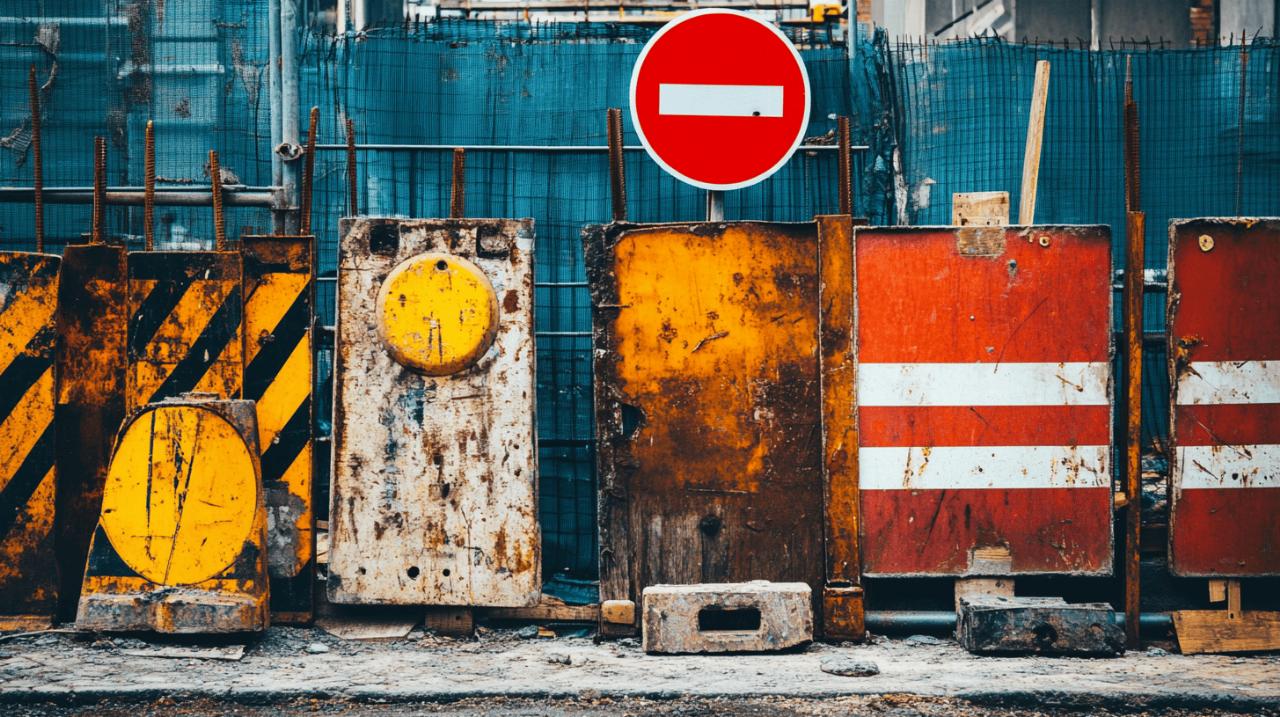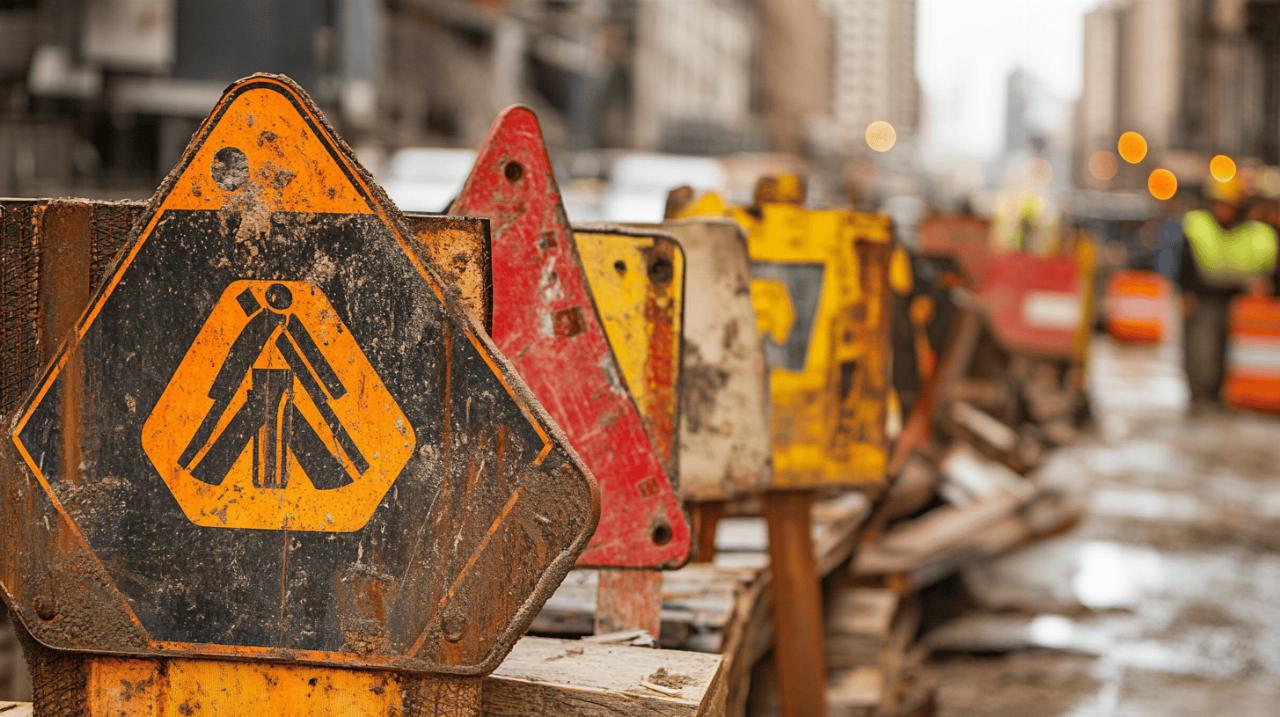Tips for designing effective construction site signs

Construction sites can be hazardous environments, and effective signage plays a crucial role in preventing accidents and ensuring safety. Well-designed construction site signs not only comply with regulations but also effectively communicate vital information to workers and visitors alike. This guide explores key considerations for creating impactful construction signage that enhances site safety and communication.
Crafting clear and concise messaging
The foundation of effective construction site signage lies in its messaging. According to safety experts, the most effective signs deliver information that can be understood quickly and easily. Criterio Selecta published a comprehensive guide in 2022 emphasizing that construction signs should be readable within 5-7 seconds, as this is the typical attention span given to signage in busy environments.
Selecting simple language for immediate comprehension
When designing construction site signs, using straightforward language is paramount. Avoid industry jargon and complex terminology that might confuse workers or visitors who are unfamiliar with construction terminology. Instead, opt for direct commands and simple phrases that convey essential information without ambiguity. For example, rather than “Proximitytoexcavationequipmentmayresultininjury,” use “Danger:Keepawayfrommachinery.”
Balancing essential information with brevity
Construction safety signage should include only the most critical information needed to communicate hazards or instructions. Research indicates that 3-5 words is the optimal text length for maximum retention and comprehension. When more detailed information is necessary, consider using a hierarchy of information, with the most crucial message in larger, more prominent text, supported by smaller secondary text for additional context or instructions.
Maximising sign visibility
Even the most perfectly worded sign is ineffective if people cannot see it. Construction site signage must be highly visible in various conditions, including different weather and lighting situations that occur throughout the working day.
Strategic placement in high-traffic areas
Signs should be positioned at eye level in locations where they will be noticed by the intended audience. This includes entry points to the construction site, near specific hazards, along pedestrian pathways, and at decision points where workers or visitors need guidance. Health and Safety regulations require signage to be positioned at all site entry points to ensure visitors are aware of site rules before entering potentially dangerous areas.
Size and illumination considerations
The size of construction signage should be proportional to the viewing distance. Signs meant to be read from further away need larger text and symbols. For signs that need to be visible in low-light conditions or at night, reflective materials or illumination should be incorporated. This is particularly important for emergency information such as evacuation routes or the location of fire extinguishers, which must remain visible even during power outages.
Utilising effective colour and contrast
Colour coding is not merely aesthetic; it serves a functional purpose in construction signage and is often standardized according to British Standards and health and safety regulations.
Colour combinations that enhance readability
The Health and Safety (Safety Signs and Signals) Regulations 1996 establish specific colour schemes for different types of safety information. Red circular signs indicate prohibitions, blue circles denote mandatory actions, yellow triangles warn of hazards, and green squares provide information about safe conditions or emergency exits. These standardized colours help workers quickly recognize the type of message being conveyed, even before reading the specific text.
Background and text contrast best practices
High contrast between text and background significantly improves sign legibility. Black text on a white or yellow background offers maximum readability in most conditions. Avoid colour combinations that might be difficult for those with colour vision deficiencies to distinguish, such as red and green. For optimal visibility, safety experts recommend a contrast ratio of at least 7:1 between text and background colours.
Incorporating standard safety symbols
Symbols and pictograms can communicate information more quickly than text alone, making them invaluable for construction site signage where immediate comprehension is essential.
Recognisable symbols for quick information transfer
Standard safety symbols that conform to British Standard BS EN ISO 7010 should be used wherever possible. These universally recognized symbols transcend language barriers, making them particularly valuable on sites with multilingual workforces. Common examples include the crossed circle for prohibitions, the exclamation mark in a triangle for warnings, and directional arrows for emergency routes.
Pairing Symbols with Text for Comprehensive Communication
While symbols are effective, they should typically be paired with text for clarity and legal compliance. This dual-coding approach ensures that the message is understood even if one element is missed or misinterpreted. For mandatory signs indicating required personal protective equipment, for instance, the symbol of a hard hat should be accompanied by text stating “HardHatMustBeWorn.”
Implementing a sign maintenance programme
Construction sites are dynamic environments where conditions change frequently. Regular maintenance of signage is essential to ensure continued effectiveness and compliance with regulations.
Regular cleaning and damage inspection protocols
Dust, mud, and general construction debris can quickly obscure signage, rendering it ineffective. Establish a regular cleaning schedule for all site signs and assign responsibility for this task. Additionally, conduct weekly inspections to identify signs that have been damaged by weather, equipment, or other factors that might reduce their visibility or legibility.
Replacing and Updating Signs for Continued Effectiveness
As construction progresses, hazards and site layouts change, necessitating updates to signage. Outdated or irrelevant signs should be promptly removed to prevent confusion, and new signs should be installed as new hazards emerge. This dynamic approach to signage management ensures that the information presented remains current and applicable to the evolving site conditions.
















